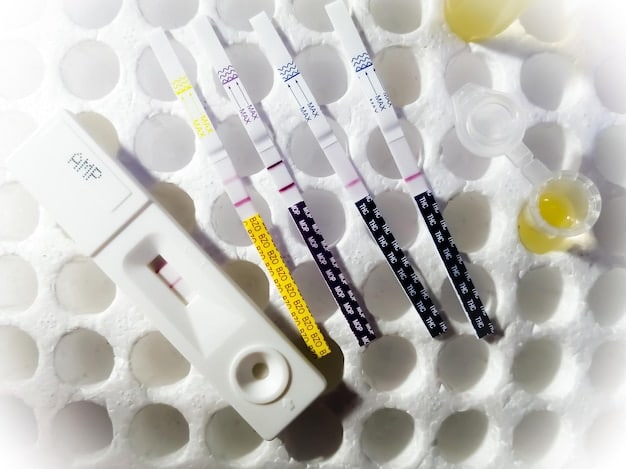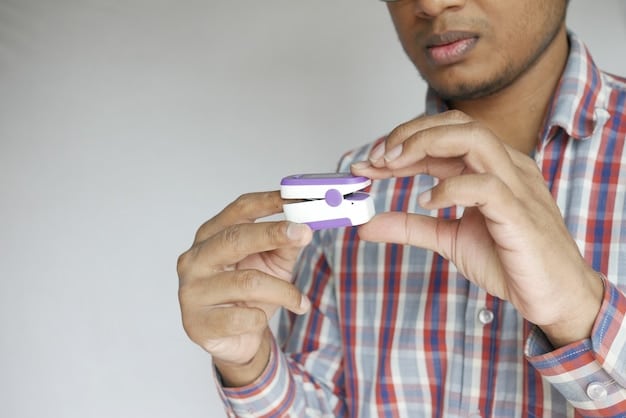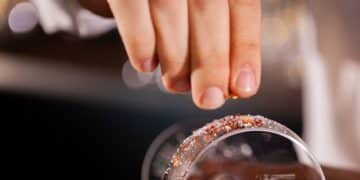The Complete Guide to At-Home Sperm Testing Kits: Accuracy and Reliability

The Complete Guide to At-Home Sperm Testing Kits: Accuracy and Reliability explores the convenience and reliability of testing sperm quality in the comfort of your home, offering insights into accuracy, usage, and what to consider when choosing a kit.
Considering starting a family or just curious about your reproductive health? The Complete Guide to At-Home Sperm Testing Kits: Accuracy and Reliability will help you navigate the world of at-home sperm testing. These kits offer a convenient and private way to assess your sperm quality, but how accurate are they? What do they test for, and how do you choose the right one? Let’s explore the facts.
This guide will provide you with the knowledge to make informed decisions about your reproductive health and family planning. We’ll delve into what these tests measure, how they compare to clinical analysis, and what factors can influence their reliability. Keep reading to determine if at-home sperm testing is right for you.
Understanding At-Home Sperm Testing Kits: The Basics
At-home sperm testing kits have become increasingly popular, offering a discreet and convenient way for men to assess their sperm quality. But what exactly do these kits test, and how do they work? Understanding the basics is essential before considering using one of these tests.
What Do At-Home Tests Measure?
Most at-home sperm testing kits focus on measuring sperm count and concentration. These tests typically provide an estimate of whether your sperm concentration falls within what is generally considered a normal range, according to World Health Organization (WHO) standards. Some kits may also evaluate sperm motility, which is the ability of sperm to move properly, and morphology, which assesses the shape and structure of sperm.
- Sperm Concentration: Measures the number of sperm cells per milliliter of semen.
- Sperm Motility: Assesses the percentage of sperm that are moving and their ability to swim effectively.
- Sperm Morphology: Examines the shape and structure of sperm to identify abnormalities.
- Semen Volume: Measures the total amount of semen in the sample.
Understanding what these tests measure helps users interpret the results in a context relevant to fertility. While these tests can provide valuable preliminary insights, they are not a substitute for a comprehensive clinical evaluation performed by a fertility specialist.

Accuracy and Reliability: What to Expect
When considering The Complete Guide to At-Home Sperm Testing Kits: Accuracy and Reliability, accuracy and reliability are paramount. These factors determine the confidence you can place in the results. While at-home tests offer convenience, it’s crucial to understand their limitations compared to clinical laboratory evaluations.
Factors Affecting Accuracy
Several factors can influence the accuracy of at-home sperm testing kits. These include the user’s adherence to the instructions, the quality of the kit itself, and the storage conditions. Improper handling or storage can lead to inaccurate results, which may cause unnecessary stress or false reassurance.
The timing of the test can also play a role. It’s usually recommended to abstain from sexual activity for a period of 2-3 days before collecting the sample. Following these guidelines can enhance the accuracy of the test. It’s important to read and follow the instructions carefully to minimize the risk of error.
Comparing At-Home Tests to Clinical Analysis
Clinical semen analysis, performed in a laboratory setting, is considered the gold standard for evaluating male fertility. These analyses provide a more comprehensive assessment, including detailed measurements of sperm count, motility, morphology, and other parameters. At-home tests, while convenient, typically offer a more limited evaluation and may not be as precise.
If an at-home test indicates abnormal results, it’s essential to consult with a healthcare professional for further evaluation. A clinical semen analysis can provide a more accurate and detailed assessment, helping to identify any underlying fertility issues and guide appropriate treatment options.
How to Choose the Right At-Home Sperm Testing Kit
Selecting the right at-home sperm testing kit involves careful consideration of several factors. With numerous options available, understanding what to look for can ensure you choose a kit that meets your specific needs and provides reliable results. Here’s what you should consider:
- Read Reviews: Look for kits with positive reviews and high ratings from other users.
- Check for Certifications: Ensure the kit has certifications or approvals from reputable organizations.
- Consider the Parameters Tested: Choose a kit that tests for the parameters that are most important to you, such as sperm count, motility, and morphology.
- Look for Clear Instructions: Select a kit with clear, easy-to-follow instructions to minimize the risk of error.
Choosing the right kit is important, but understanding the results should be taken with a grain of salt until confirmed by a medical professional.

Step-by-Step Guide to Using At-Home Sperm Testing Kits
Using at-home sperm testing kits correctly is crucial for obtaining accurate and reliable results. The process generally involves collecting a semen sample, performing the test, and interpreting the results. Here’s a step-by-step guide to help you through the process:
Step 1: Preparation
Before starting, read the instructions carefully and ensure you have all the necessary components. Abstain from sexual activity for 2-3 days before collecting the sample. This abstinence period helps ensure that the sperm concentration is at its peak.
Step 2: Sample Collection
Collect the semen sample by masturbation into the provided collection cup. Avoid using lubricants as these can affect sperm motility. Ensure the entire ejaculate is collected to ensure accurate results.
Step 3: Performing the Test
Follow the kit’s instructions for performing the test. This usually involves adding a specific amount of the semen sample to the testing device and waiting a certain amount of time for the results to appear. Be precise and avoid touching the testing area.
Step 4: Interpreting the Results
Read the results according to the kit’s instructions. Most kits provide a visual indication of whether your sperm concentration is within the normal range. If the results are unclear or abnormal, consider consulting with a healthcare professional.
Interpreting Your Results and Next Steps
Interpreting the results of your at-home sperm test is a critical step in understanding your reproductive health. It’s important to approach the results with a balanced perspective, recognizing both the potential insights and the limitations of these tests. Remember, The Complete Guide to At-Home Sperm Testing Kits: Accuracy and Reliability points out that the results should be considered alongside professional medical advice.
Understanding Normal vs. Abnormal Results
Most at-home sperm tests provide a straightforward indication of whether your sperm count falls within the normal range, as defined by the World Health Organization (WHO). A normal result typically means your sperm concentration is above a certain threshold (e.g., 15 million sperm per milliliter). However, it’s important to note that this is just one aspect of male fertility. Other factors, such as sperm motility and morphology, also play a significant role.
An abnormal result suggests that your sperm concentration is below the normal range. This doesn’t necessarily mean you are infertile, but it does warrant further investigation. Other factors affecting fertility include ejaculation problems, hormone imbalances, and blockages in the reproductive tract.
When to Seek Professional Advice
Regardless of the results of your at-home sperm test, it’s wise to seek professional advice and additional testing. Clinical semen analysis in a laboratory setting offers a more comprehensive evaluation, including detailed measurements of sperm count, motility, morphology, and other parameters. Consulting with a healthcare professional is particularly important if you have any concerns about your fertility or if you’ve been trying to conceive unsuccessfully for several months.
Debunking Myths About Male Fertility and Sperm Testing
There are many misconceptions surrounding male fertility and sperm testing. Understanding the facts can help you make informed decisions about your reproductive health. Let’s debunk some common myths related to sperm testing and male fertility.
- Myth: Only sperm count matters for fertility.
- Fact: Sperm motility and morphology are also crucial factors. Motility refers to the sperm’s ability to move properly, while morphology assesses the shape and structure of sperm. Both factors significantly impact the ability of sperm to fertilize an egg.
- Myth: At-home sperm tests are as accurate as clinical analysis.
- Fact: At-home tests provide an initial assessment but are not as comprehensive as clinical semen analysis. Clinical analysis evaluates multiple parameters and provides more detailed measurements.
- Myth: If an at-home test shows normal results, there are no fertility issues.
- Fact: Normal results on an at-home test do not guarantee fertility. Other factors, such as hormone imbalances or structural issues, can affect fertility.
Understanding the facts and debunking these myths can empower you to take the appropriate steps to assess and manage your reproductive health.
| Key Point | Brief Description |
|---|---|
| 🔬 At-Home Testing | Convenient way to assess sperm at home. |
| 📊 Accuracy Factors | Accuracy depends on adherence to instructions. |
| 👨⚕️ Professional Advice | Consult a doctor for comprehensive analysis. |
| ✅ Choosing Kits | Read reviews and check for certifications. |
Frequently Asked Questions (FAQ)
At-home sperm testing kits primarily measure sperm concentration and offer an initial assessment of fertility. These tests are generally less accurate than clinical semen analyses, which evaluate a broader range of parameters beyond sperm count.
Accuracy can be influenced by user adherence to instructions, kit quality, and storage conditions. Improper usage or handling may lead to inaccurate results. Following the instructions carefully and ensuring the kit is stored correctly is essential to improve accuracy.
You should consider using these kits if you are curious about your sperm quality, planning to start a family, or experiencing difficulties conceiving. They provide a preliminary assessment, but professional medical evaluation is crucial for comprehensive analysis.
If your at-home sperm test results are abnormal, it’s essential to consult with a healthcare professional. A clinical semen analysis can provide a more accurate and detailed assessment to identify any underlying fertility issues that require attention.
No, at-home sperm testing kits cannot replace a visit to a fertility specialist. These kits offer a convenient initial assessment, but they do not provide a comprehensive evaluation of male fertility. A fertility specialist can offer a more detailed diagnosis and personalized treatment plan.
Conclusion
The Complete Guide to At-Home Sperm Testing Kits: Accuracy and Reliability offers a convenient first step in understanding male fertility. These kits provide a discreet way to assess sperm quality, but it’s important to recognize their limitations and the impact on overall accuracy.
Ultimately, at-home sperm testing kits should be viewed as preliminary tools, to better support a full medical assessment. For comprehensive insights and informed decisions about reproductive health, consulting with a healthcare professional is essential.





